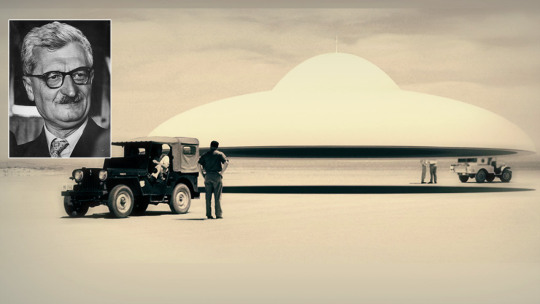#hermann oberth
Explore tagged Tumblr posts
Text
Oberth was said to have reread "From the Earth to the Moon" so many times as a child that he knew it almost by heart.
"The Moon: A History for the Future" - Oliver Morton
#book quote#the moon#oliver morton#nonfiction#hermann oberth#jules verne#from the earth to the moon#reading#rereading
0 notes
Text
Oberth gave lectures on such possibilities. But, in his memoirs, Willy Ley, vice president of the VfR, recalled a conversation with the older man after a lecture in the late 1920s:
"Do you think, Herr Professor, that there will be a need for rockets carrying a load of mail over five hundred kilometers?"
Oberth looked at me with the smile which old-fashioned pedagogues reserve for people whom they call "my dear young friend" and said after a while: "There will be need for rockets which carry a thousand pounds of dynamite."
"The Moon: A History for the Future" - Oliver Morton
#book quotes#the moon#oliver morton#nonfiction#hermann oberth#lecture#willy ley#vfr#verein fur raumschiffahrt#conversation#20s#1920s#20th century#questions#rockets#dynamite
0 notes
Text
„Es ist auf der Welt nichts unmöglich, man muss nur die Mittel entdecken, mit denen es sich durchführen lässt.“
Hermann Oberth
0 notes
Text

Street market, Piața Hermann Oberth, Sighişoara, 1916. From the Budapest Municipal Photography Company archive.
29 notes
·
View notes
Text

Hermann Oberth (forefront) with officials of the Army Ballistic Missile Agency at Huntsville, Alabama in 1956. Left to right around Oberth: Ernst Stuhlinger (seated), Major General H. N. Toftoy, Commanding Officer responsible for "Project Paperclip", Wernher von Braun, Director, Development Operations Division, Robert Lusser, a Project Paperclip engineer.
9 notes
·
View notes
Text
The maneuver and effect are named after the person who first described them in 1927, Hermann Oberth, a Transylvanian Saxon physicist and a founder of modern rocketry.
People used to be from Transylvania!
4 notes
·
View notes
Link
Solar power is a booming industry right now as we all strive to run our lives with minimum carbon footprint. Solar is a relatively easy way to get clean electricity but of course we are limited to the hours then Sun is above the horizon. Solar panels in space have been muted before but the costs and technology to transmit power to Earth is prohibitive. An alternative approach has been explored by a team of engineers who have been looking at the possibility of deploying giant reflectors into space. They are a familiar site on houses these days, panels of crystalline-silicon that convert light into electricity. Solar panels have to be positioned carefully to maximise incoming sunlight and thus maximise electricity generation. If a way could be found to increase the amount of time a solar panel was in sunlight then of course they would be more useful to us. In 1993, a 20metre Russian space mirror known as Znamya-2 was unfurled to demonstrate that sunlight could be reflected down to Earth. The concept to use reflectors in space to prolong the time that solar panels are illuminated is a far simpler and cheaper solution to some sort of solar power station in space. Arguably one of the key times in the day when power is needed is at night so being able to extend the hours of sunlight seems like a great concept. It’s not a new idea though as Hermann Oberth suggested it back in 1929 when he visualised giant reflectors in space, reflecting light down to areas that need it. A paper recently published explores the reality of the concept and shows how the vision of Oberth may now be achievable. It should be noted that the idea is designed to target sunlight onto solar farms rather than individual homes. The technology is now available and materials suitable to be able to create, launch and deploy large solar reflectors into space. Once deployed, an orbiting reflector could be angled to direct sunlight onto a solar farm as it passes over, extending the ‘day’ and increasing electricity generation. The reflectors which are proposed to be hexagonal with sides 250 metres long would likely be deployed into orbits at an altitude of about 900km. This would illuminate an area approximately 10km across and extend generation time by around 20 minutes either side of dusk and dawn. Concerns that these would destroy the night are likely to be unfounded due to the planned approach to target solar farms away from inhabited areas. The reflectors would not be visible ot the naked eye unless you happened to be standing near a solar farm at the time it was beign illuminated and astronomical observations protected by angling the reflectors when not in use. It is likely to be some years before such a project became reality but it is nice to see engineers and scientists looking at ways to enhance the generatin of clean energy in a way that promotes protection of our planets natural resources but also limits negative impacts on human activity. Source : Reflectors in space could make solar farms on Earth work for longer every day The post Reflectors in Space Could Make Solar Power More Effective appeared first on Universe Today.
6 notes
·
View notes
Text
Sci-Fi Saturday: Woman in the Moon

Week 5:
Film(s): Woman in the Moon (Frau im Mond, Dir. Fritz Lang, 1929, Germany)
Viewing Format: Streaming - Kanopy via San Francisco Public Library
Date Watched: June 6, 2021
Rationale for Inclusion:
Including Woman in the Moon (Frau im Mond, Dir. Fritz Lang, 1929, Germany) on this survey came down to two reasons: curiosity about Fritz Lang's sci-fi follow up to Metropolis (1927, Germany) and the film's reputation as an early cinematic work of "hard" or "serious" science fiction.
For those not familiar with the term, for something to qualify as "hard" science fiction, the technology and world building needs to be based on available scientific facts, and theoretically, realistically possible. Its counterpart, "soft" science fiction comes up with fantastic notions, technology and worlds without much attention given to how these things could be produced in the real world. Neither approach is necessarily a superior way to craft a good work of science fiction. Whether you draw blueprints, or "just make it up," both paths have inspired, or predicted, later technology.
Lang's Metropolis is undoubtedly soft science fiction; its set pieces being more artistic than scientific. Witnessing him take a more factual approach to science fiction, with a foundational figure in the field of rocketry and aeronautics, Hermann Oberth, acting as consultant was an intriguing premise.
Reactions:
Despite knowing that Woman in the Moon was a work of science fiction created with input from a German rocket scientist, my partner and I were still not fully prepared for the way space travel in the film used realistic multi-stage rockets, and depicted methods for how the rocket's passengers would deal with takeoff and landing G-forces and zero gravity in between. Logically, we knew our Space Race history and should not have been surprised: the United States imported Nazi Rocket scientists to help build its space program for a reason (i.e. the V-2 rocket). Yet seeing what became common operational features on a fictional spaceship in 1929, 17 years before the first US V-2 tests, was a paradigm shift.
For this reason, the detail that most sticks in my mind about this film is that the spaceship had leather handles all over its walls, to help passengers navigate around the ship in zero gravity.
However, as much as Woman in the Moon correctly prefigured many details of crewed space travel, it still got some things wrong. When the crew of the Friede reaches the far side of the moon, they discover that it has a breathable atmosphere, as theorized by astronomer Peter Andreas Hansen, and subsequently explore the surface without environmental suits or even oxygen tanks.
As much as I appreciate the film citing its sources, they picked a source that would save on budget and elevate the theories of a German scientist. Perhaps it was a legitimate belief in Hansen's work, not convenience or patriotism, that led to this choice, but the facts remain that an astronomer from the Republic of Ragusa (present day Croatia), Roger Joseph Boscovich, had correctly theorized 85 years prior that the moon lacked a breathable atmosphere.
Yet, I do not think the use of Hansen's theories over Boscovich's detracts from the hard scientific elements of the narrative that turned out to be correct. I think Lang, or screenwriter and author of the novel on which the film was based Thea von Harbou, just wanted serious sci-fi elements and its protagonists to have the ability to kiss on the moon without spacesuits getting in the way. Even the best intentions of hard sci-fi can be derailed by mainstream romance conventions.
In revisiting this film for this blog post, it's admittedly hard to recall the plot without details from films we later watched from the 1950s interceding. The core facets of Woman in the Moon--an experimental rocket ship, a love triangle, stowaways, loss of a necessary component that imperils the crew's ability to return home--would be remixed and reused in similar films about experimental space flights to Earth's moon or Mars, such as Rocketship X-M (Dir. Kurt Neumann, 1950, USA) and Conquest of Space (Dir. Byron Haskin, 1955, USA). Yet this confusion only reinforces the status of Woman in the Moon as essential sci-fi cinema viewing: it told a semi-realistic tale of experimental crewed spaceflight decades before it became a bona fide sci-fi film sub-genre.
4 notes
·
View notes
Text
We can prove this pretty easily. The commonly attributed "fathers of modern rocketry" were Robert Goddard, Konstantin Tsiolkovsky, Hermann Oberth, Robert Esnault-Pelterie, and Fritz Von Opal. These are just the guys we know of, who all had wildly different life circumstances, and all lived roughly in the same time period. Oberth died in 1989! These are the guys who managed to succeed in SPITE of their horrid conditions, the world wars, and disease. It's not numbers that make the geniuses, turns out it's just humans being geniuses when given resources.
And the New York Times called Goddard a lunatic, only retracting their statements on the eve of the Apollo 11 moon flight that landed Neil Armstrong and Buzz Aldrin on the moon.




84K notes
·
View notes
Text
It's a rebrand!! I've decided it was high time to shed the scaly skin of my old online life and reincarnate into a new spiritual form.
Maybe I was influenced into Francophilia by Expedition 33, or maybe it's just my latent academic interests: the new name of my blog comes from the works of Camille Flammarion, the 19th century's most popular astronomer (also the source of my icon). He was also a spiritualist and science fiction writer, and two of his stories, Lumen and Uranie, are all about expounding his spiritual-scientific beliefs about the universe. In my research I focus on people like Flammarion, who were above all the reason why spaceflight went from a fantasy to a reality: not techno-fetishists like Elon Musk, but people who had a transcendent view of the Cosmos that understood the vast universe as rich with intelligent souls like our own. This was the height of a transitory period in Western science from religiosity to secularism, where empirical knowledge was expected to explain, not disprove, God. This was not the realm of outliers and fanatics, but a popular understanding of science that was only subsumed by the secular after the Second World War. The great rocket pioneers—Konstantin Tsiolkovsky, Robert Goddard, and Hermann Oberth—were all inspired by the sacred scientific and the occult. When one of the most influential early popularisers of space exploration, Willy Ley, wanted to disseminate his ideas about spaceflight in the 1940s, he chose to publish in, of all places, the Rosicrucian Digest. Above all though, these people were inspired by the idea of life beyond Earth. The great impetus of spaceflight has always been the hope that there are others like us out there. It's no coincidence that as popular discourse around space exploration became in the second half of the 20th century much more mechanistic and secular, driven by engineers and entrepreneurs, when the soul was replaced by the brain, interest in spaceflight has waned. Without that imaginative mysticism about it, the passion just isn't there. Space is still beautiful, but not in the same way as it was for people in the 19th century. As Flammarion put it: “...here is scope for a contemplation which will bring us face to face with the greatest of all mysteries, the mystery of universal and eternal Life. Here we face sublime Truth, and come to terms with the Creation itself. Seen in such guise, the Earth becomes a province of the universe—we sense unknown brothers in other fatherlands of the Infinite!” —The Planet Mars (1892), p. 512
A trace of those days still lingers in the space exploration our time. My banner image comes from NASA's 1965 Mariner mission to Mars, and you can notice that it's criss-crossed by canals: NASA, in planning their mission to the red planet, used Percival Lowell's map of Mars to plot the Mariner probe's journey. They expected, or hoped, to finally solve the mystery of the Martian canals and see evidence of the great civilisation that was said to have resided there.
They found nothing, but nonetheless, the Mariner mission report stated that the existence of the canals could neither be proven nor disproven.
1 note
·
View note
Text










Fathers of Rocket Science 🚀
The word “father” is a bit tricky because science is built by many minds over time. But in rocketry, five legends stand out as pioneers who shaped the field. Let’s meet them!
1️⃣ Konstantin Tsiolkovsky (1857-1935) – The visionary. He never built a rocket, but his equations laid the foundation. He figured out that rockets need multiple stages and that space travel is possible using liquid fuel. His famous Tsiolkovsky equation is still used today!
2️⃣ Robert Goddard (1882-1945) – The practical genius. While others dreamed, he built. In 1926, he launched the world’s first liquid-fueled rocket. He also developed innovations like gyroscopic control, thrust vectoring, and multistage rockets. His work led directly to modern spaceflight!
3️⃣ Hermann Oberth (1894-1989) – The teacher. His 1923 book, The Rocket into Planetary Space, inspired a generation of engineers, including Wernher von Braun. He helped design early spaceflight concepts and contributed to German rocketry during WWII.
4️⃣ Wernher von Braun (1912-1977) – The engineer of action. He led the development of the V-2 rocket in WWII and later became a key figure in NASA’s Apollo program. His Saturn V rocket sent humans to the Moon!
5️⃣ Robert Esnault-Pelterie (1881-1957) – The forgotten pioneer. He improved rocket designs, introduced the idea of space travel using atomic energy, and patented early spaceflight controls. His work inspired later breakthroughs.
Without these five, spaceflight would’ve taken much longer to happen! 🌍✨
Check, our substack for more in-depth articles on such topics.
#comics#sciencecomics#webcomics#science#stem#educationalcomics#liquidbird#becurious#comicstrips#rockets#space#electronics#aircraft
0 notes
Text
Thanks for tagging me <3
last song: Some instrumental Christmas song while writing my Christmas Noah/Joel Fanfic. (there's so much fluff already, help!)
favorite color: black, green, purple
last book: Last one finished was die Eure Heimat ist unser Albtraum anthology, currently reading Vom Tellerwäscher zum Tellerwäscher by Ciani-Sophia Hoeder
last movie: Good Bye Lenin!
last TV show: Heartstopper
sweet/spicy/savory: sweet
relationship status: aromantic single but willing to do romantic-coded stuff sometimes
last thing I googled: hermann oberth (cause I was thinking about how I have way too many three degrees of separation to people, it's not even funny anymore. Sometimes I'll start liking a thing and then it turns out I have a three degrees of separation to someone involved in it - even though I don't even know a lot of people! That guy? Yeah, I remembered how my dad randomly told me once that my great-grandma was best friends with his wife, lol.)
looking forward to: going on my three-week-vacation next week, the next season of Schloss Einstein, whatever my life decides to surprise me with next
(Tagging anyone who wants to)
ten people i'd like to get to know better
tagged by: @megkuna thanks <333
last song: the phantom of the opera
favorite color: muted green
last book: uhhhhhh oh man i really need to start reading books
last movie: phantom of the opera which i watched with a friend
last tv show: the original star trek which i also watched with a friend
sweet/spicy/savory: sweet, i love sugar too much
relationship status: single and not looking, i'd rather just have more friends
last thing i googled: "how to know if skincare routine is too harsh" my pimples hurt in a Different way now :(
current obsession: probably still mob psycho 100 but it's not what it used to be. yay depression
looking forward to: when my family finally moves into the new house
tagging: @scarecloud69 @disorganised-thoughtss @daneonrainbow @lawful-goof @officialkarinuzumaki @leo-probably @vychodocech @umkayonninay @mocha-blossom @spageddy29 no pressure though <3
3K notes
·
View notes
Quote
Our educational system is like an automobile which has strong rear lights, brightly illuminating the past. But looking forward things are barely discernible.
Hermann Oberth
43 notes
·
View notes
Text
Padre de la Astronáutica afirma: "OVNIs son naves espaciales de otros mundos"

Padre de la Astronáutica afirma: "OVNIs son naves espaciales de otros mundos"
A la fecha muchas voces, de investigadores y entusiastas, han expresado su creencia en los OVNIs; pero tener un personaje tan importante como el padre de la astronáutica afirmando que los «OVNIs son naves espaciales de otros mundos» es algo único. Veamos un poco más de estas asombrosas declaraciones.
LEE MÁS
1 note
·
View note
Photo


https://en.wikipedia.org/wiki/Hermann_Oberth
Franz Abdon Ulinski (1890–1974)
0 notes
Text

Meeting at the Infinity Line
premise: 1921. Edward Elric has only been in Munich for a month when his father Hohenheim disappears… leaving Edward with only instructions to find his own housing. Strapped for cash and still meandering in mind and spirit, he resigns himself to an irregular schedule by renting a flat as a day tenant. At the same time, Alfons Heiderich moves from Augsburg to Munich and rents the same flat as the night tenant, a holdover until he can find longer-term housing when he returns from Romania. In this liminal time frame, without meeting each other in person, the two young men learn about each other like true scientists — through observation and hypothesis.
written for the Equivalent Exchange Anthology and featured in print project 1! pre-orders end on October 3rd, 2021: order your copy here! (see below the cut for image descriptions and citations)
notes:
A. in projective geometry, two parallel lines intersect at the line at infinity (also called the 'ideal line') - ha, ha
B. I borrowed the premise of this story from my favorite live-action series, Babylon Berlin
C. this was very fun to write and I look forward to sharing the story!
D. the timespan of the images in this preview post is somewhat wide; I hope you'll accept this!
image text - story excerpts:
1. Alfons’s dream is to design a machine that will travel into space. For now—good luck, he wishes, as he drops the envelopes into the post box and then taps the brim of his cap in greeting [...] —he hopes that one of these will make its way back to him with positive news.
2. For years, Edward had been in constant motion—they had, he and Al. It’s hard not to slip into a strange inertia without him. [ … ] He sighs and stands, with a creak from Hohenheim’s prototype limbs. The dexterity is awful; it’s no Rockbell work. Alchemists should stick to alchemy, mechanics to mechanics; each to their respective craft.
Then again, even Edward is trying to dabble outside of his usual sciences. Einstein, Oberth, he’ll see who’ll come out for the better—and come out on the other side.
3. [ Edward ] drops inelegantly onto the bed, only to bolt upright, with a hiss of pain, twisting around to find whatever jabbed sharply and unexpectedly into his back.
A book?
Hardcover, looking like it’s traveled its fair share: a collection of fictional stories. Edward leafs through the pages, unimpressed and irritatedly rubbing at the sore spot that H.G. Wells—evidently—dug into his spine with its own. [ … ] Edward’s eyes are drawn to a particular passage, underlined in careful pencil:
‘Face this world. Learn its ways, watch it, be careful of too hasty guesses at its meaning. In the end you will find clues to it all.’
4. Fairy tales? But then Alfons looks further: red, yellow, blue script in Latin that confounds his schoolboy proficiency, save for some—Sulphur, Aqua—inscribed above kettle-shaped glass flasks, which house small colorful spheres or even smaller humanoid figures. He flips the page. A translation in English, which he scans until:
‘Convert the natures of the Elements and thou shalt find what thou seekest.’
He snaps the book shut. Who is the person occupying this same space during the daytime? Is it a historian who sleeps in his bed? Perhaps an artist, a novelist? An occultist? Or a Time Traveler, Alfons chuckles, somewhat sheepish at the absurdity of that last supposition. Think more rationally, like a scientist or an engineer.
image description and sources - visuals:
1. Postcard of Munich, Germany, from 1907, showing the Frauenkirche and Rathaus and the skyline (source)
2. "Flying Machines" excerpt from the English translation of "The Pocket Book of Aeronautics, Hermann Willhelm Ludwig Moedebeck, 1907 (source)
3. A photograph of a prosthetic leg from the 1920s (source)
4. The title page of "The Time Machine," H.G. Wells, first edition (source)
5. Alchemical diagram of a flask containing black liquid and colored spheres; the text is Donum Dei, an Austrian or German alchemical text (image source) & (text source)
6. Pharus Plan of Munich, 1923 (source)
#fullmetal alchemist#fullmetal alchemist 2003#conqueror of shamballa#edward elric#alfons heiderich#equivalent exchange anthology#fma 2003#fma 03#fma cos#fma#sorry for all of the tags folks
122 notes
·
View notes